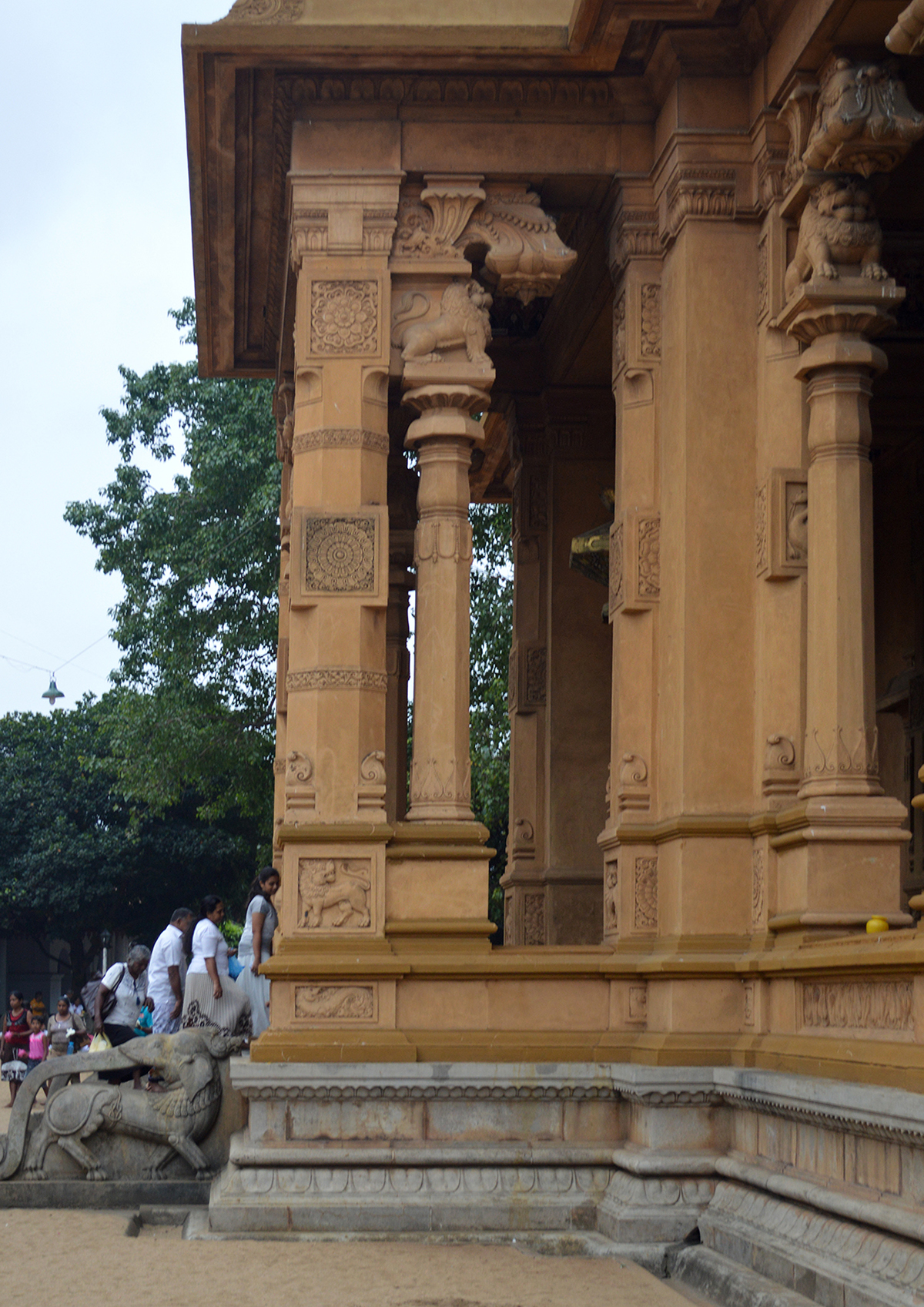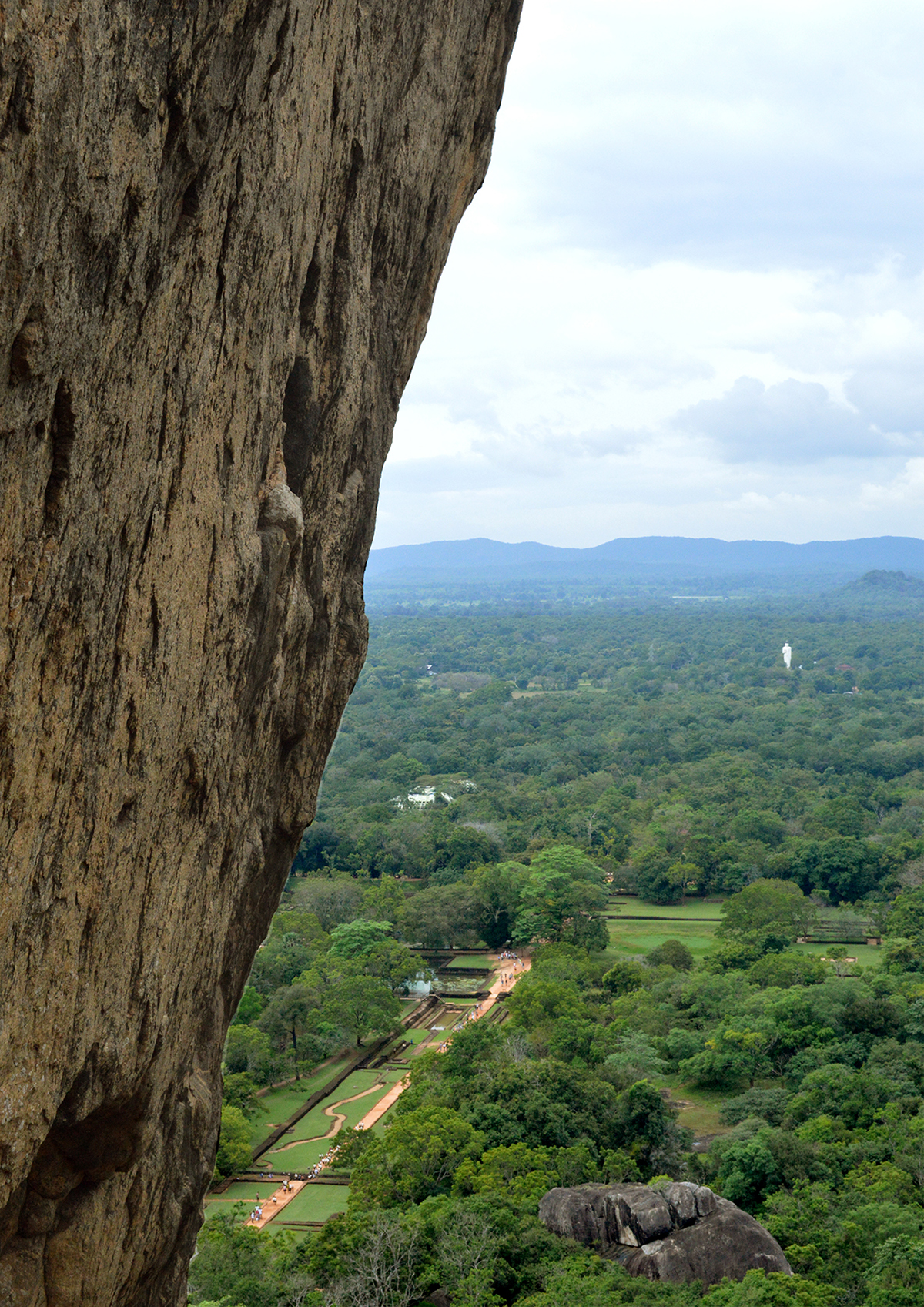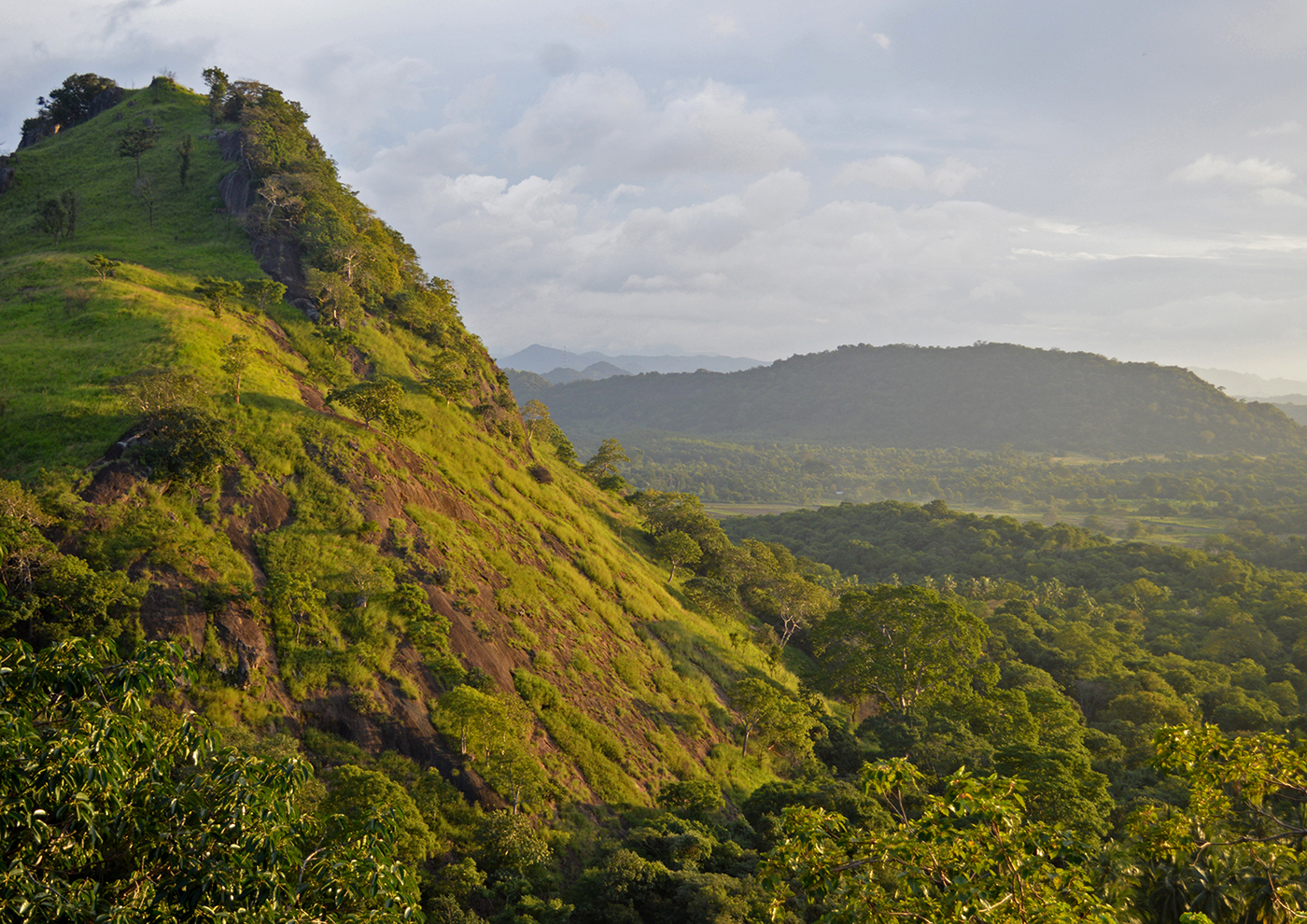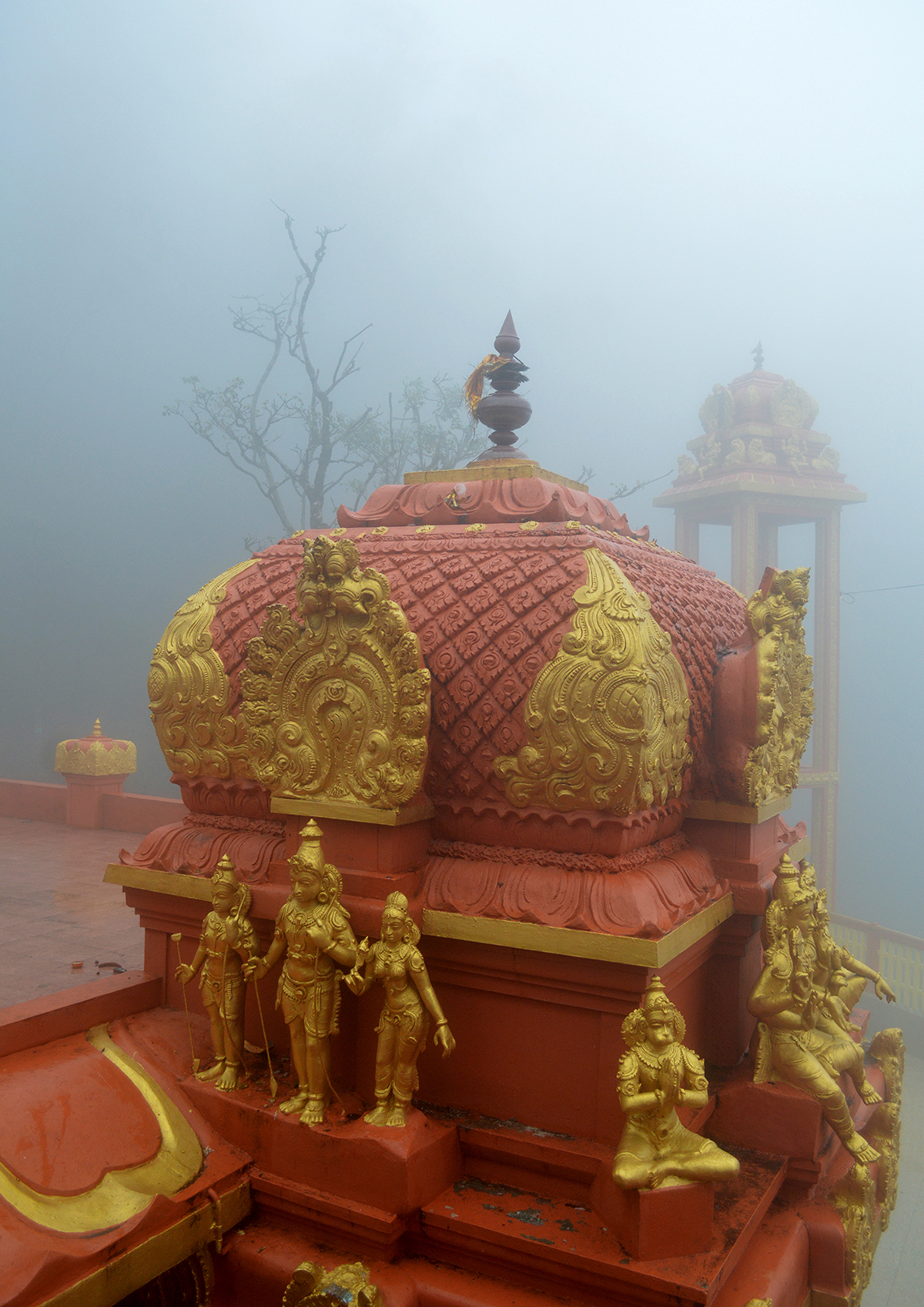Sri Lanka
Ayubowan!

Calligrapher Pradnya Naik and I were invited to be a part of Typoday 2017, Sri Lanka.
Typoday is a design conference which is a celebration of Indian typography, calligraphy and font design.
After completing the 3 day conference, we explored different parts of Sri Lanka, staying with local families,
traveling by public transport and depending heavily upon Google Maps.
The tear-dropped island of Lanka is surrounded by the sea on all sides, making it a coastal land, with scenic beaches that
have clean water and beautiful marine life. But as you move towards the centre it becomes forested and densely green with plush hillsides, tea gardens and old English towns. We travelled from Colombo to Kandy by train, made a day's trip to Dambulla and Sigiriya, then headed off for Nuwara Eliya by a local bus and then drove down to the Akurla beach near Hikkaduwa in the Southern Province. A muggy weather, with spicy local seafood, warm-hearted families, clean but traffic-filled roads, neat urban architecture, different car models from China, Japan and Europe, and peace-loving friendly people greeted us.


We saw this Japanese truck in Colombo. There is a lot of urban development work in Colombo, and it is not unusual to find Chinese, Japanese
and European vehicles including machinery being used on different sites.

Jamia Ul - Alfar Mosque is located in the busy market of Pettah in Colombo. It is an optical art created with two contrasting colours.
It was built by traders of the Bohra Muslim community that traveled to Sri Lanka frequently for trade, and finally became settlers.

It follows the Indo - Islamic architectural style infused with a Neo - Classical style. This is the front of the mosque, which also has openings on all four sides.
If you look at it for too long it can play tricks on your eyes. Every brick and pillar is hand-painted alternating between colours of white and Indian red.

This part of the mosque is an extension that was added years later. They have attempted to follow the same style of architecture, and colours to keep the
difference minimal. Both the portions together can accommodate over a thousand people for daily prayers.

A view of the Kelaniya Raja Maha Vihara - a Buddhist temple, located outside Colombo.
Buddha along with five hundred monks is said to have visited this temple 2700 years ago, thus sanctifying it.


The sides of the temple are covered in rows with intricate carvings.
Some of the architectural features resemble temples from South India.

A rows of Hamsa's - Swans or a Goose, followed by little Buddha's, ending with a row of elephants - all symbolic elements of Buddhism are carved around the temples outside walls.

Kandy's local market is like a quadrangle surrounding a central courtyard. It has stalls selling fruits, vegetables, spices, meat, fishes and clothes.
Kandy is also popular for its Herb and Spice gardens, and this shop was selling small souvenir bottles of special oils and spices for tourists.
I love the arrangement, the colours are eye-catching and I love the fact that it just hangs from the roof.

This market also sells a lot of dried fish, prawns and shrimp. There are mountains of them within local stalls, with the fixed price for the day.
As Kandy is in Central Province of Sri Lanka, instead of enjoying fresh coastal fish the markets sell more of dried seafood.

A salt & pepper holder. An ingenious way of using an opened oyster shell.

A traditional Sri Lankan breakfast which we ate in Helga's Folly at Kandy.
Lentil pancakes, coconut chutney, and a dry daal-curry, followed by bananas and a cup of locally brewed tea.

Sigiriya, a World Heritage Site - an example of ancient urban planning. Once you cross the moat, there is a straight path leading you to the rock fortress.
This is a view of the surrounding gardens, while climbing up the stairs.

Sigiriya is surrounded by green mountains on all the sides for many miles, and this surrounding land remains untouched.

A part of the palace on top of Sigiriya, made entirely of bricks and stone.

One of the water ponds built for the queens in the ancient times.

Dambulla Cave temple.

There are 153 Buddha statues, and the intricate wall murals expand across 2,100 square meters.

Details of an intricately painted plinth within the caves temple complex.

The complex outside the cave temples.

A walk down a lane in Nuwara Eliya. This is a scenic old town, famous for tea gardens in Sri Lanka.
It is also the place where Ravana captured and kept Seeta captive.

It was a misty morning when we visited the Seetha Amman temple, in Nuwara Eliya. It is supposedly one of the only temples in the world dedicated to
Goddess Seetha. We managed to capture an image of the temple's roof.

Sacred threads tied to the tree, within the temple's complex.

We explored Nuwara Eliya by visiting the old English - Pedro Tea Estate, that produces some of the finest tea's that are exported. We visited the British era factory and saw the process of tea production from beginning to the end and also tasted different varieties of tea. The factory is fully operational and hires more than a 1500 people from the district.
The Pedro Tea Estate is also called Lovers Leap, named after the scenic waterfalls, nearby.

Temple of the Sacred Tooth Relic, popularly known as Sri Dalada Maligawa is located in the Royal Palace complex at Kandy.
It enshrines the tooth relic of Lord Buddha, the left upper canine tooth.

An intricately painted ceiling, with paintings of Buddha's stories on the surrounding walls of the prayer hall.

Part of an exposed Coral Reef on the shores of Akurla Beach, near Hikkaduwa, in Southern Province, Sri Lanka.





